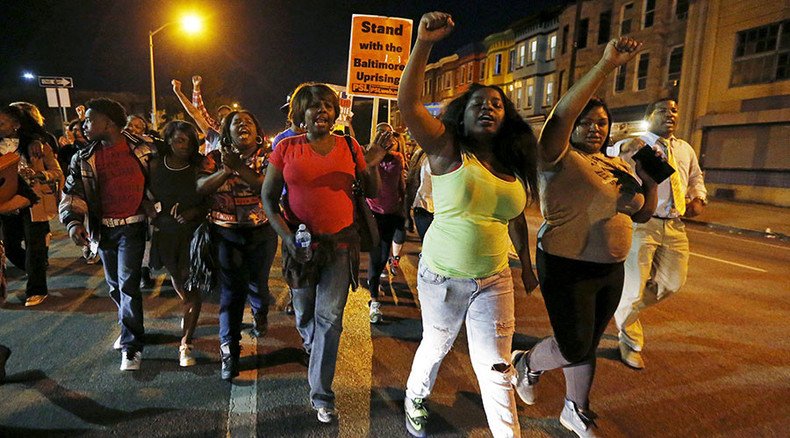FBI conducted aerial surveillance above Ferguson and Baltimore

The head of the FBI has admitted that it used aircraft to conduct surveillance above Ferguson, Baltimore, and other cities to keep track of unrest on the ground during protests over police-involved deaths of civilians.
“If local law enforcement asks for help in getting a look at a developing situation, we will offer that help. We’ve done it in Baltimore, we did it in Ferguson,” FBI Director James Comey told the House Judiciary Committee at a hearing on Thursday.
FBI director says agency used aerial surveillance above Ferguson: https://t.co/2Y8MgYfqTV via @STLtoday
— David Carson (@PDPJ) October 23, 2015Comey did not go into details during the hearing or explain how long the surveillance had lasted. He said the FBI’s deployment of aircraft in Ferguson, where police and protesters clashed followed the August 2014 police shooting of an unarmed black 18-year-old named Michael Brown, was similar to help offered to Baltimore last April following the death of Freddie Gray, who died after suffering grievous injuries in police custody.
“If there is tremendous turbulence in a community, it’s useful to everybody, civilians and law enforcement, to have a view of what’s going on,” said Comey. “Where are the fires in this community? Where are people gathering? Where do people need help? And sometimes the best view of that is above rather than trying to look from a car on the street.”
.@FBI Director James Comey testifies before @housejudiciary Cmte – LIVE online here: https://t.co/W5Y52Nk2Oipic.twitter.com/4F5UCkZLPH
— CSPAN (@cspan) October 22, 2015In response to questioning, he said the FBI deployed airplanes when local police request help during a “developing situation” or emergencies such as riots. Airplanes are also used during routine investigations.
“When we investigate criminals, spies or terrorists, a key tool is surveillance to follow them. We follow them a lot in cars, we follow them on foot. But there are plenty of circumstances where those options don’t work so well … so since the Wright brothers, we’ve used airplanes to follow people in our investigations,” Comey told the panel.
“We do not use planes for mass surveillance,” Comey assured the panel.
He said the agency has a small number of planes, but that “we don’t fly…around America looking down to see if somebody might be doing something wrong.”
FBI operating surveillance aircraft over US, planes traced to fake companies – report http://t.co/kymZcDrYrKpic.twitter.com/pcaUCI8ZW5
— RT America (@RT_America) June 2, 2015The Associated Press reported in June, however, that it had tracked at least 50 aircraft back to the FBI and identified more than 100 flights in 11 states over a 30-day period last spring. Law enforcement officials told the AP that the FBI hid its aircraft behind shell companies to protect the safety of pilots and aircraft, shielding their identities from would-be suspects on the ground.
When asked whether the FBI needed to secure a warrant when using aircraft equipped with high resolution cameras to follow an alleged criminal, spy or terrorist, Comey said, “I don’t think so.”
“We are not collecting the content of anybody’s communication or engaging anything besides following someone in that investigation. ...The law is pretty clear that you don’t need a warrant for that kind of observation,” he said.
FBI now says #STINGRAY surveillance can be disclosed http://t.co/RfL7hHaKC1pic.twitter.com/5AyUwhTpLN
— RT America (@RT_America) May 16, 2015He was later asked whether the agency needed a warrant when using “Stingray” technology.
“We have one aircraft that we can put Stingray technology on, that is cell site simulators, and we could mount it on others if we had a court order to do it,” said Comey. “But we decided, as a matter of policy, that if we are going to operate a cell site simulator … it has Fourth Amendment implications … so we will get a warrant for that. On the ground or in the airplane we treat it the same way.”












